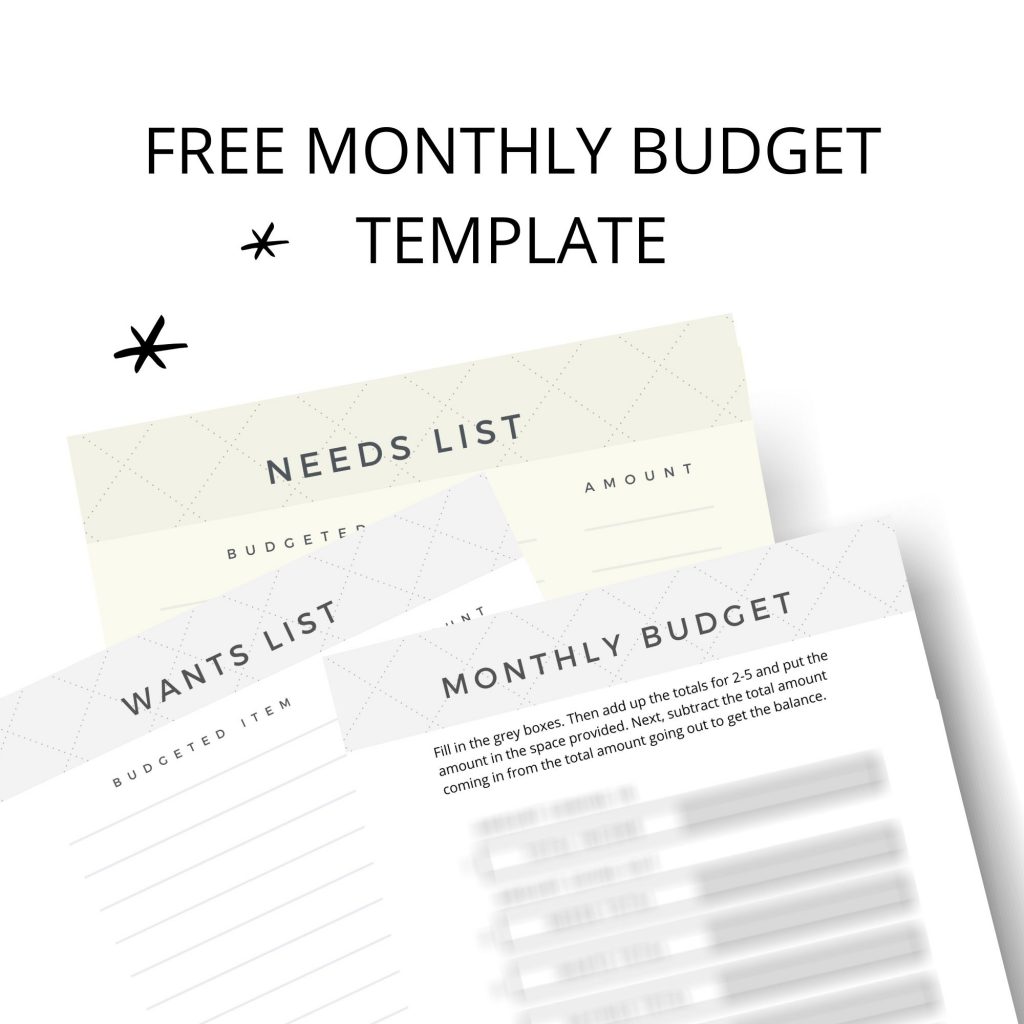There might be affiliate links in this post. If you click on a link and make a purchase, I receive a small commission. Read my disclosure policy here.
The title “Budgeting Tips to Achieve Goals & Have More Fun” sounds like a tall order. If you’ve never made a budget or the habit just got away from you, it’s okay to start now.
These personal budgeting tips can surely help you meet your financial goals, stress less and have more fun with the money you have. Congrats for clicking this post and taking the first step. Whether you searched for “budgeting for students” or “budgeting for families,” the categories may very, but the process is all the same.
So where do you begin? Budgeting can seem a little daunting. Keep in mind that anyone who wants to budget effectively has to begin somewhere.
Everyone starts at the beginning. Before you are able to mentally calculate whether or not it’s a good idea to go on that camping trip or move into a bigger place, it’s important to go slowly so you don’t get confused or overwhelmed.
Best Budgeting Tips for Beginners or (Those Who Lost Their Way ) with Step-by-Step Guidance
Some people hear of money saving tips to help with their budget. There’s no shortage of smart spending suggestions and budgeting tips and advice such as using coupons, finding deals or getting a side hustle to help supplement your income. Many of these ideas can be helpful.
However, it’s important to know where you stand first before implementing any of those ideas. Start with knowing what your actual budget is.
How should a beginner budget?
Learning to manage money and expenses can be a challenge. When you’re new at renting or owning a home, running a household, taking care of a family, etc., you might not even know what percentages to spend on housing, transportation, etc.
A beginner should budget by following some general rules of thumb to start. You don’t want to spend so much on housing or transportation that you have little left over to pay other bills or do anything fun.
How do you create a simple budget?
I think the simplest way to start a budget is to begin with the 50/30/20 rule. The gist of it is you spend 50% on necessities, 30% on wants and 20% on savings and retirement.
It’s a general rule of thumb. Sometimes people make the mistake of buying a house or car that eats up a large percentage of their money and they don’t realize it until afterwards.
If you have some general guidelines from the start, you can avoid buying more house or car than you can actually afford. It can’t hurt to start there when you’re a beginner calculating your budget or if you’re making a big financial decision about where to live or how much to spend on transportation.
There are some personal finance bloggers that have strong views about this. Some of them like to set their percentages differently for a variety of reasons.
Their goal is to save much more for retirement than traditional advice by potentially spending less on housing and other big costs. It can also be a way to spend more money on travel in the meantime or to retire early and then travel all over.
Read more about the 50/30/20 rule via the qinvest section of Medium.com, follow anyone in the FIRE (financial independence, retire early) Movement to read up on early retirement, or consult a financial professional to determine what’s right for you.
Here are 10 steps to create a budget along with my best monthly budgeting tips:
1. Look back at your monthly spending.
Whether you’ve used a budget before or it’s your first time, here’s a refresher. Before you do any calculating, be sure to take a peek at last month’s spending.
If you have a bank account, check your bank statement to figure out where all of your money typically goes in a month. Take note of any bills that might be automated on a credit card. Look there too. You’re welcome to jot this all the things to include in a budget as I explain using these free budgeting worksheets.
2. Start with the “Needs” category.
Follow the 50/30/20 rule to keep a basic budget and start by looking for the higher priced expenses in the needs category such as:
- Housing
- Utilities
- Transportation
- Health Care
- Loan Repayments
3. Then fill in other needs.
Think about food, clothing, anything health related and other miscellaneous budget categories such as household items, personal care, etc.
4. Look at irregular bills too.
Next, if you have any bills that aren’t monthly, be sure to find those too and add them to the right categories. For example, maybe you pay an insurance bill quarterly, such as for a vehicle or life insurance if you have kids. This would be considered a need.
These types of bills can easily fly under the radar and feel like unpleasant surprises when they arrive. Forgetting about them is common and you might not have enough money to pay them when they are due. Here’s more details about how to deal with unexpected expenses.
Best budgeting tip alert! Remember that anything you pay for quarterly or annually needs to be converted into a monthly amount to accurately reflect your expenses.
Break quarterly expenses into smaller amounts
Say you pay your insurance quarterly at a cost of $200 per quarter. Since there are 3 months in a quarterly period, you would divide that by three to get your monthly amount of $66.66.
Consider pulling these smaller amounts each paycheck into a separate savings account. Total up what that bill would cost you for the whole year.
If you get weekly paychecks, divide by 52 (since there’s 52 weeks in a year). If you get biweekly checks, then divide by 26. Ship that amount out each paycheck.
Supposing that you do this for each irregular bill (any that come regularly, but aren’t monthly), you can pay all of your irregular bills when they are due.
Set up a separate savings account just for irregular bills. Ship that amount to that account each paycheck so by the time the bills come, the money will already be set aside.
Many online banks make it easy to do this. This has made a world of difference for me and is one of the best saving strategies for different goals! Before you forget, set up an account using a Capital One savings account today!
Once you get the hang of things, you can even set up a separate account for wants such as going to fancy restaurants, virtual salsa lessons or other exciting bucket list things to do. Isn’t that one of the best monthly budgeting tips you’ve ever heard? 😉

5. Next, identify what you spend on wants.
Go through expenses that would fit under the “wants” category such as entertainment, eating out, vacation, hobbies, etc. It could be anything that isn’t a need! (And don’t worry if you can’t think of everything off the top of your head.)
6. Check out savings and investments.
Perhaps you put aside money for savings and retirement too. Be sure to account for these expenses as well. It’s easy to forget about them if you automate them.
7. Add up all of your expenses.
Once you have successfully looked over everything, add up all of your expenses. The bank statement will show how much you’ve spent without having to separate every little thing.

8. Subtract your expenses from your income.
Finally, subtract that amount from how much you make in a month. Left over money is great. Decide what to do with it. A negative number means you are spending more than you earn.
In this case, you’ll have to tweak your budget categories to make the numbers work. Can you get a better deal on your cell phone bill?
Are you able to switch to a different internet or cable provider? Are there expenses you can ditch completely? See if you can spend less in other areas too.
When buying gifts, if you normally spend $50 per gift, maybe you set a budget to only spend $30 per person and maybe pair it with some gift of time ideas. Switches here and there can make a big difference.
9. Make some changes.
Start with changes that won’t really completely cramp your lifestyle. Cancelling subscriptions, getting better deals or changing providers may be all that you need to do to balance things out.
Unless looking over your budget makes you want to kick things into high gear and you catch what seems like crazy budget fever to get things in order, I recommend a gradual change to get used to the shifts little by little.
10. Monitor your progress.
Once you situate things, be sure to track your expenses regularly so you can stick with your budget. Maybe you calculate a certain amount you can spend each week on entertainment, groceries, personal care, etc.
Vowing to spend less on groceries can help if that’s a trouble spot or you just need a place to cut. Also, eating out less often can improve things as well. No matter what you decide, be sure to follow through the new budgeted amounts you set.
Don’t be hard on yourself if you slip up. Try things out and see what works best for you. You can’t expect to be perfect at it. See how you do and tweak things as you go.
If you want to read more about budgeting, I highly recommend the book, You Need a Budget. This book helps you create a budget based on your values and not someone trying to give cookie cutter advice that doesn’t work for everyone. It will also tell you how to budget better and save money. It will also provide guidance for keeping a budget.


Conclusion for Budgeting Tips
Personal budgeting takes some work. Use the budgeting tips mentioned to create your budget and stick with it. This is one of the best ways to budget when you’re starting out.
Implementing some of these monthly budgeting tips can go a long way to improve your financial situation, breathe a sigh of relief and allow you have more fun. Remember, the best financial budget is the one that works for you.
Do you have any other personal budgeting tips? What are some of the best budget tips you’ve heard?
Related Articles for Budgeting and Budget-friendly Articles
